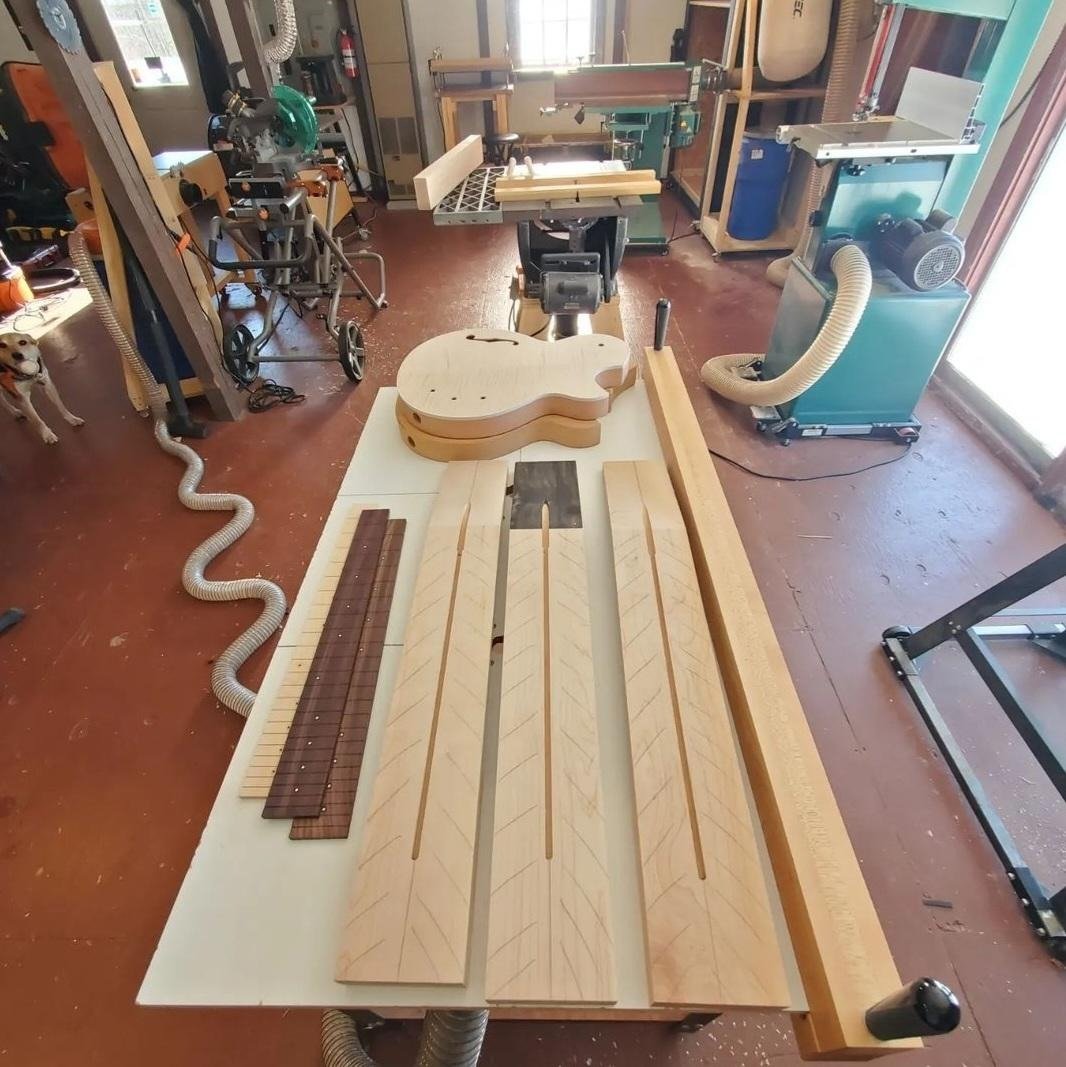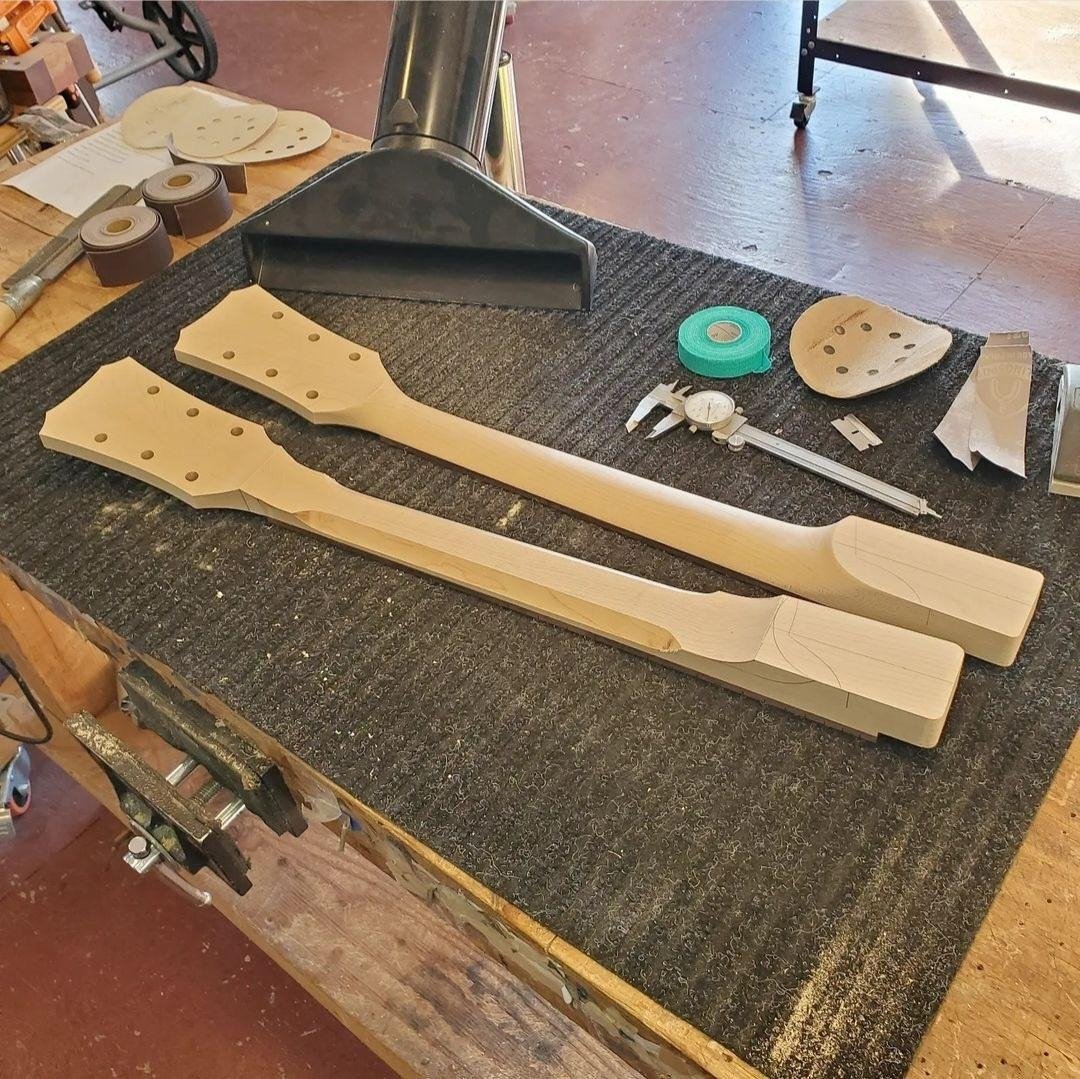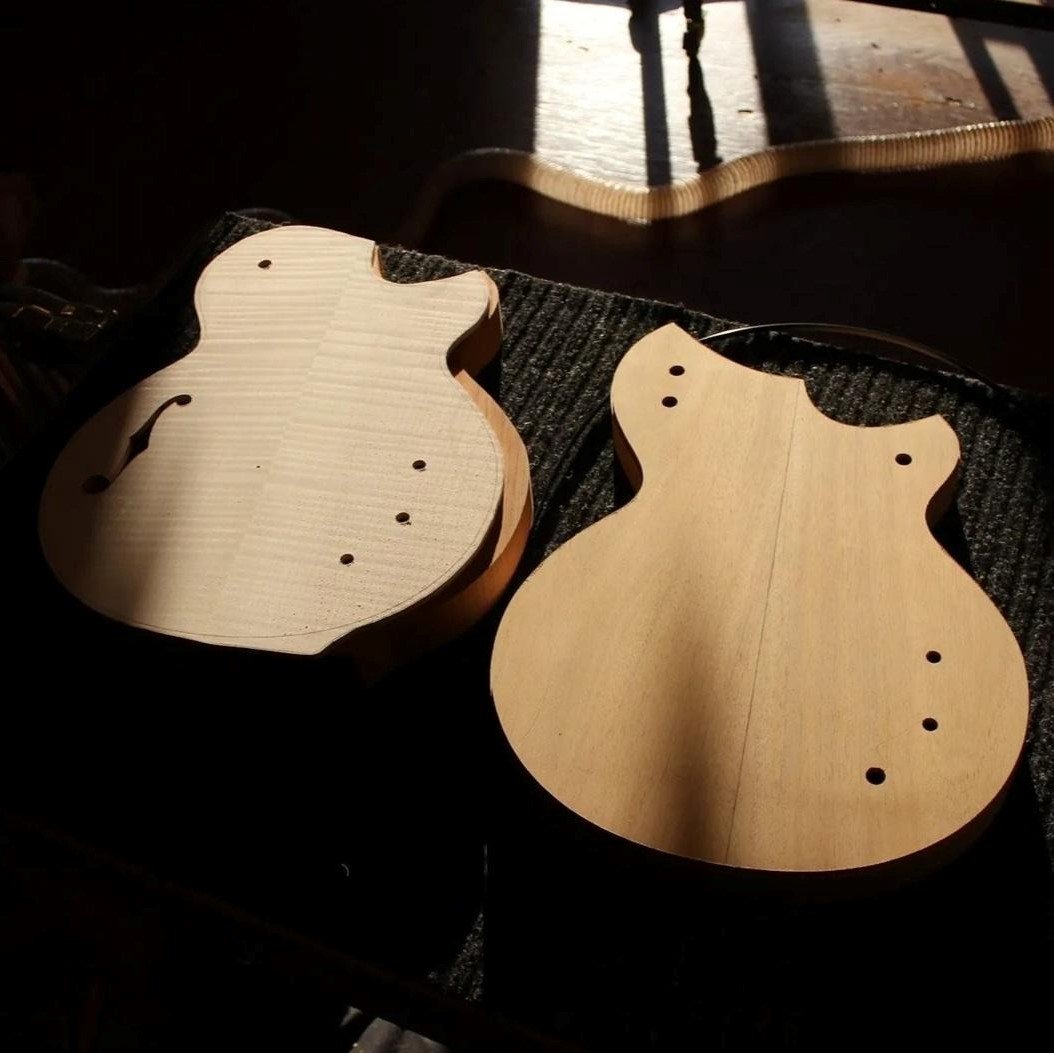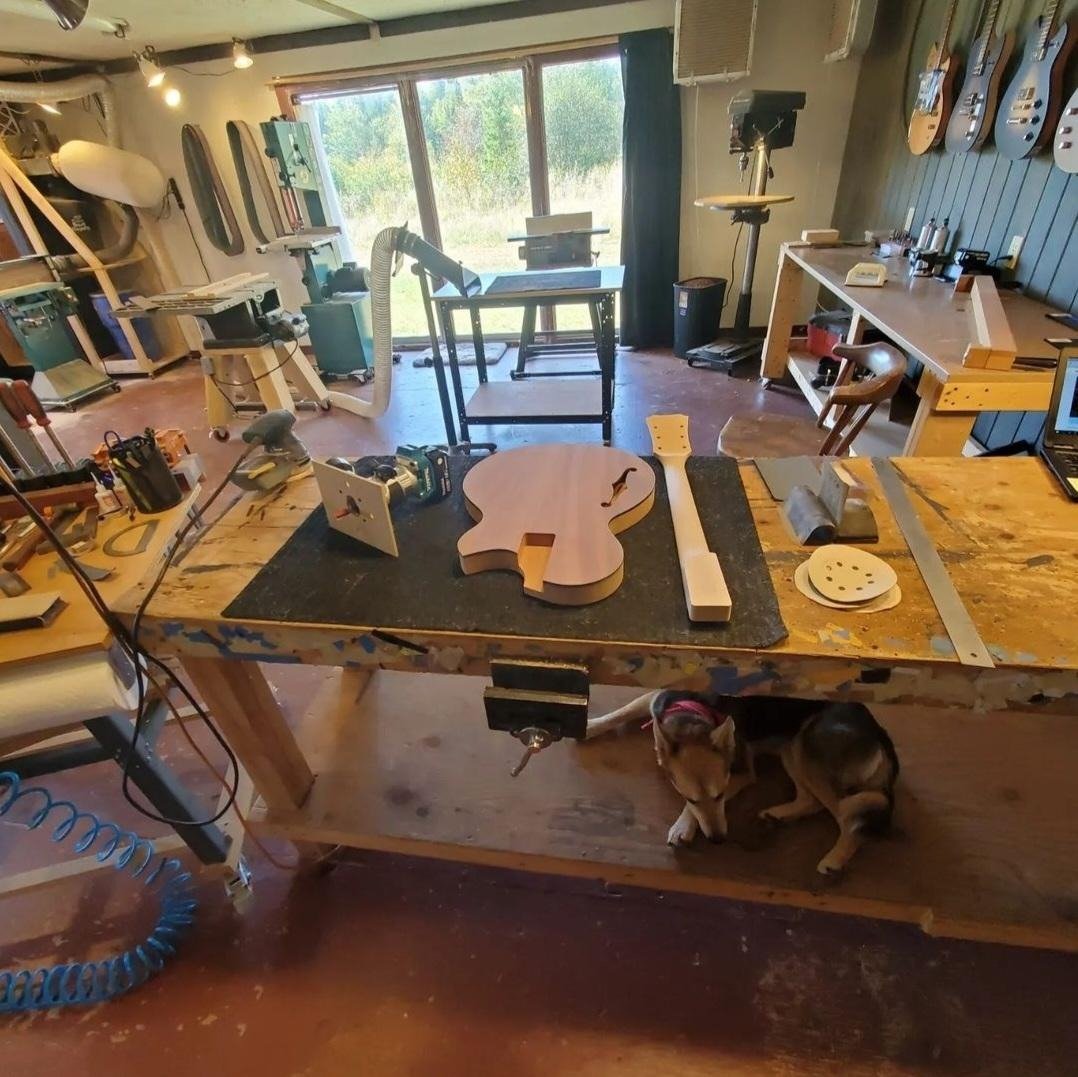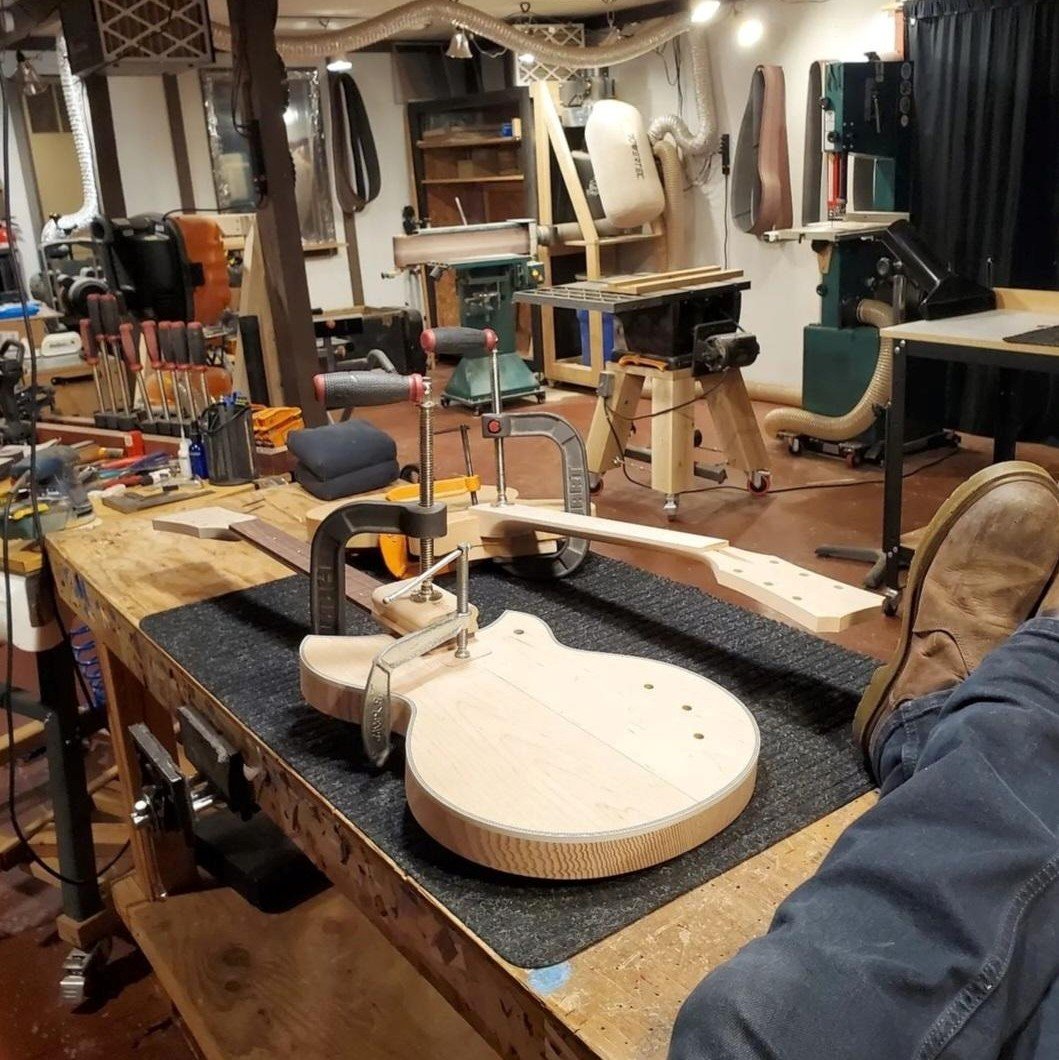I’m James, I live on the rural Maine coast and I handcraft guitars from rough cut kiln dried hardwoods. Over 145 built to date - each unique with a headstock stamp of their respective chronological number. My Instagram is the best place to check out daily work, to watch guitar builds from start to finish, and to see guitars dating back to about 2016. The FAQ section below has lots of specific information. Available ready to ship guitars are listed for sale on Reverb. To ask any questions and to inquire about custom builds, I can be reached through the Contact page.
I started playing guitar in the late 90s at about 15 years old and music became a big part of my life. And I’ve always had interest in building and repairing things. So over time these two elements naturally combined and I started making my own instruments. I finished a bachelors degree in Journalism and Philosophy at the University of Southern Maine in 2008 and a few years later went to the Roberto Venn Guitar Luthiery School in Phoenix Arizona. After finishing the guitarmaking program at Roberto Venn I traveled up the west coast to Puyallup Washington where I worked on the neck crew at Warmoth from 2011 to 2012 before moving back to Maine where I began to focus on building and designing my own guitars. Over the years I’ve worked as a carpenter, roofer, oil rig roustabout, farmhand, cook, law firm courier, sandblaster, blueberry harvester, and more. I’ve been making guitars now for about 15 years. I take care of everything at Gronlund Guitars including website design, photography, and of course designing and building guitars. I’m constantly growing and evolving my designs and I believe I make some of the best handcrafted guitars in the world.
My friend Andy Batson shot and edited this in the summer of 2017. We had just three days to film so we chose to make a single pickup slab body guitar and worked near nonstop around the clock to make it all come together. He left here with three long days of footage to edit down to three minutes. It was in July during a few of the rare days in Maine when the temperature hits about 90 degrees. So along with the hot lights for filming it was an oven in here. I didn’t know for sure if we could do this in three days so it was pretty victorious getting there. Music courtesy of the fantastic Jeremie Albino.
FAQ
Q: How do I buy a Gronlund guitar? What are your ordering terms? How do you accept payment?
All currently available ready to ship guitars are listed at my Reverb.com shop. All guitars bought there are returnable for 3 days after delivery.
Custom builds are bought directly from me and require a 50% deposit to begin and the remaining 50% can be paid at the time of the guitars completion. To begin a custom build simply contact me with your specifications and ideas! All custom build sales are final.
Paypal or Venmo work great for payment of custom builds. Once we’ve worked up a finished spec sheet for a custom build I will email a 50% invoice.
Q: Do you offer a warranty with your guitars?
Yes, I consider every guitar I build to have a lifetime warranty. It does not matter if you are the original owner or a second hand owner. If you have one of my guitars and it has any issues you can ship it to my shop and I will work on it and return it to you. I’ve made a lot of guitars over the years and I love to hear from people who own them.
Q: Do you make left handed guitars?
Absolutely! For the same price as a right handed guitar.
Q: What are your current wait times for custom builds?
I can generally have most custom builds completed in 8 to 12 weeks.
Q: Do you use a CNC machine in the construction of your guitars?
No I don’t. But I have nothing against CNC machines. Many of my guitarmaking peers use them and they are incredible tools. Who knows maybe one day I’ll use one, but for now I still use paper and pencil in the drafting of all of my designs and I build everything completely by hand from scratch. I use hand tools such as files, rasps, spokeshaves, and chisels and power tools such as routers, bandsaws, tablesaws, and belt sanders and I love carrying on in this traditional manner.
Q: What kind of cases do you ship in?
I ship every guitar in Mono Vertigo cases.
Q: How do you package a guitar for shipping and what is the price of shipping?
I use oversized heavy duty corrugated boxes reinforced internally with foamboard. Works great and I have shipped all over the USA and to Germany, New Zealand, France, and Dubai. Shipping will generally be $100 for standard shipping within the USA. International shipping varies depending on location.
Q: Can I change specifications on my custom build along the way?
Maybe. If the item in the building process that you're interested in changing hasn't already been completed then I can likely accommodate any such requests. It's best to have a confident set of specs to begin with that you know you wont want to change, but if you do change your mind on something definitely don't be afraid to ask!
Q: How should I store my guitar?
I build in a humidity controlled workshop at 45% humidity. I would recommend keeping a humidity gauge in your home and a humidifier/dehumidifier to keep a 40% to 55% humidity environment. However, going outside of this range is of course part of the life of a hard working traveling guitar. It may sometimes just simply require a truss rod adjustment. The big things to really avoid are temperature and humidity extremes. Do not leave a guitar in a hot car, or on a wall where it will get prolonged direct sunlight exposure every day, or too close to a fireplace or any other type of heating source. Also do not leave a guitar in freezing temperatures, such as in a car overnight during winter.
Q: What does the small stamped number on the back of the headstock mean?
The guitars are numbered in chronological order starting with 001 and working up from there. So, for example, if you have 062 then you have the 62nd guitar I built. Some of the early guitars were not numbered. If you have one and are curious what number it is and are curious about any other details about it just send a photo and I can tell you what I remember about it! I love hearing from people who have bought second hand Gronlunds.
Q: What do you use for a finish on your guitars?
I have used a number of different finishes over the years. The majority of existing Gronlunds are finished with a thin nitrocellulose satin lacquer. Some of my early guitars have a thin polyurethane, varnish, or pre cat lacquer. In 2023 I started using a thin oil based varnish and this is what I am currently using on all guitars. It has an incredibly smooth and raw “in the wood” feel. If you own a second hand Gronlund and want to know what it is finished with just shoot me a message and I should be able to let you know!

